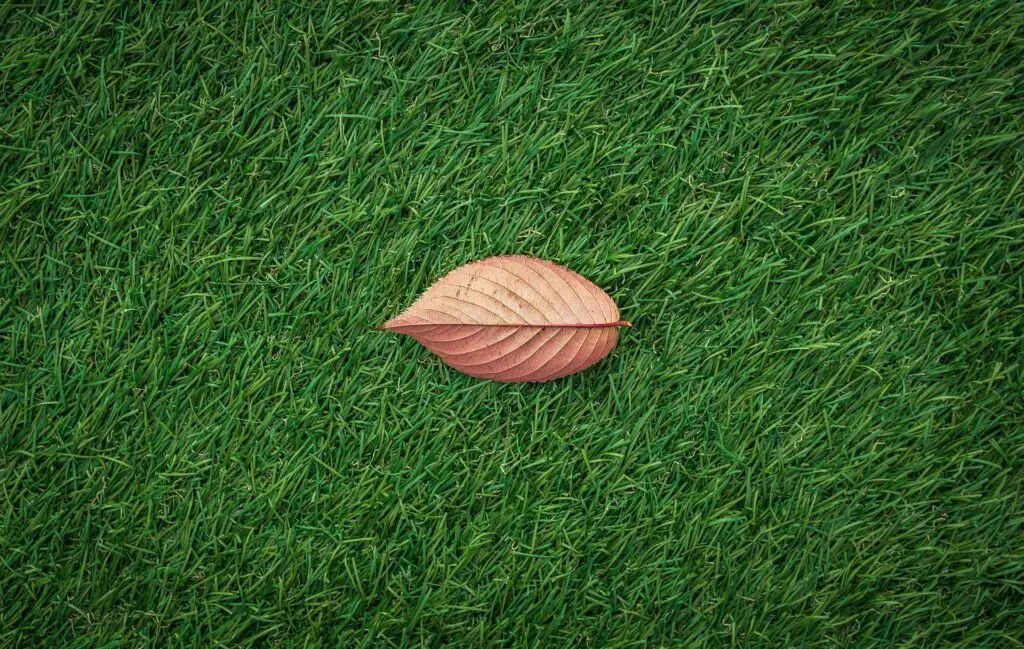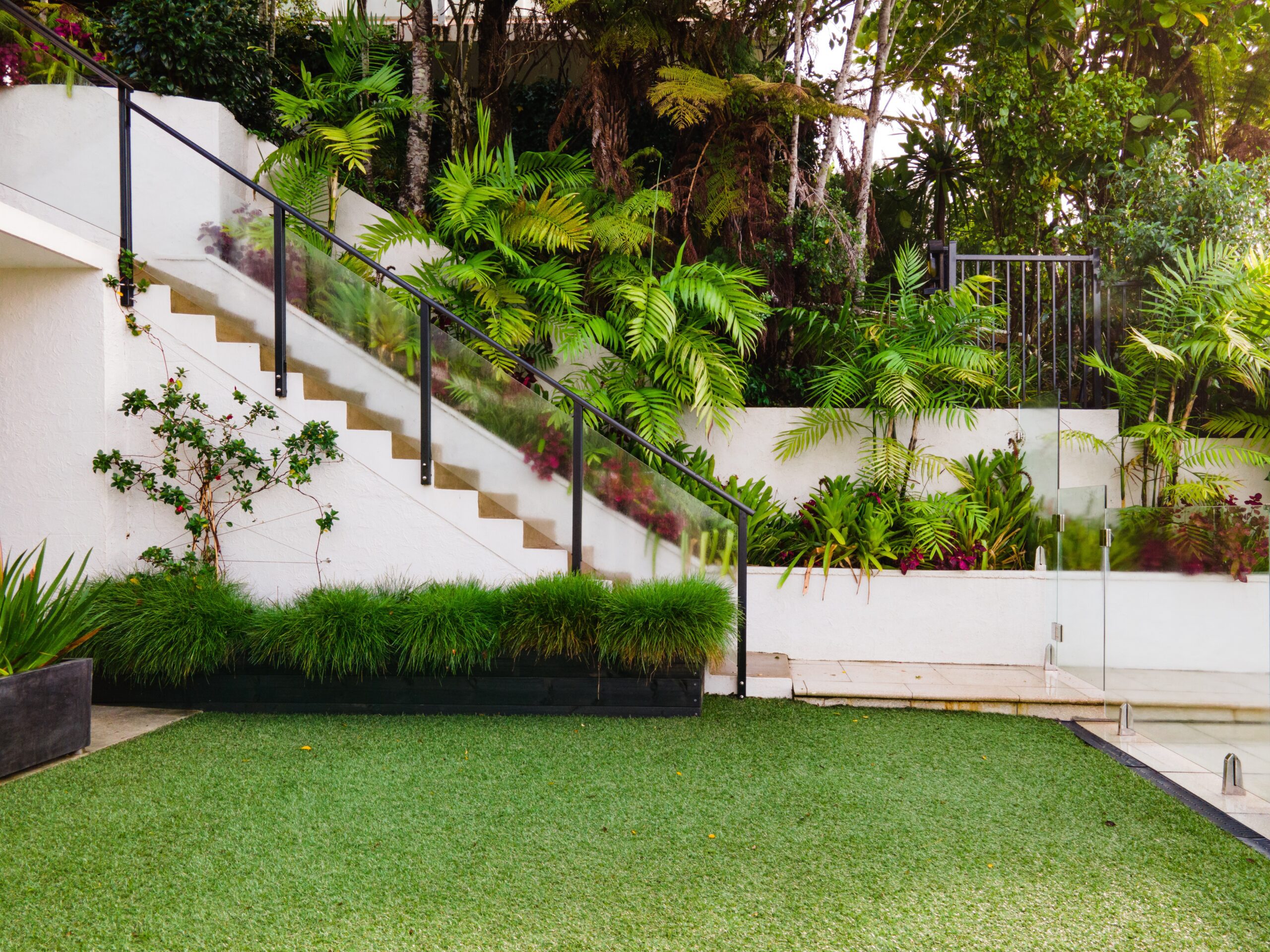Artificial grass is becoming more and more popular as a viable alternative to natural grass. It is low-maintenance, long-lasting, and can be used for a variety of purposes. One of the benefits of artificial grass is that it does not require regular cleaning in order to maintain its appearance; however, there are some dos and don’ts when it comes to cleaning artificial grass. Here, we will outline how to clean artificial grass – the dos and don’ts, the best way to clean it, and how often you should clean it.
What is artificial grass?
Artificial grass is a synthetic material that is used to replace natural grass in areas where it is not possible or practical to grow real grass, such as in an indoor setting or on a rooftop. It is made from synthetic fibers that are tufted together to create a surface that resembles natural grass. Artificial grass is often chosen for its low-maintenance properties; it does not require watering, mowing or fertilizing, and it can be used in a variety of settings.
Why do people choose to install artificial grass?

There are many reasons why people choose to install artificial grass. It is a low-maintenance alternative to natural grass, which means that it does not require regular watering, mowing or fertilizing. Artificial grass is also long-lasting and can be used in a variety of settings, such as indoor and outdoor areas. It is also pet-friendly and environmentally friendly, as it does not require the use of pesticides or herbicides.
How to clean artificial grass – the dos and don’ts
Artificial grass is becoming more and more popular across the country as a viable alternative to natural grass. It is low-maintenance, long-lasting and can be used for a variety of purposes. Here, we will outline how to clean artificial grass – the dos and don’ts, the best way to clean it and how often you should clean it.
The first thing to note is that you should never use a power washer on artificial grass. The high pressure of the water can damage the grass and shorten its lifespan. Instead, opt for a garden hose with a spray attachment or a low-pressure washer.
When cleaning artificial grass, always start by removing any debris such as leaves, sticks or stones. This can be done with a leaf blower, a garden rake or simply by hand. Once the area is clear, you can start cleaning.
The best way to clean artificial grass is with a mixture of water and mild dish soap. Simply mix together some warm water and dish soap in a bucket and use a sponge or cloth to apply it to the grass. Scrub gently to avoid damaging the grass and then rinse with clean water.
For tougher stains, you can use a 1:1 ratio of white vinegar and water. Apply the mixture to the stain and scrub gently before rinsing with clean water.
You should aim to clean your artificial grass at least once a month. This will help to keep it looking its best and prevent the build-up of dirt and debris. If you have pets, you may need to clean more frequently to remove any pet waste.
The best way to clean artificial grass – using a pressure washer
If you have an artificial lawn, then you’re probably looking for the best way to clean it. Well, using a pressure washer is the best way to do it! Here are the steps:
1. Start by spraying the artificial grass with a garden hose to remove any loose dirt or debris.
2. Wet the artificial grass with a low-pressure setting on your pressure washer.
3. Use a cleaning solution designed specifically for artificial turf. You can find these at most home improvement stores.
4. Apply the cleaning solution to the artificial grass with the pressure washer on a low setting.
5. Let the cleaning solution sit for 10-15 minutes.
6. Rinse the artificial grass with a low-pressure setting on your pressure washer.
7. Let the artificial grass dry completely before using it again.
How often you should clean your artificial grass
Artificial grass is becoming more and more popular across the country as a viable alternative to natural grass. It is low-maintenance, long-lasting and can be used for a variety of purposes. However, just like with any other surface, it needs to be cleaned on a regular basis. we will outline how often you should clean your artificial grass and the best way to do it.
Ideally, you should clean your artificial grass at least once a week. This will help to remove any dirt, debris, or build-up that can occur over time. If you have pets that use artificial grass, then you may need to clean it more frequently.
The best way to clean artificial grass is to use a mild soap and warm water solution. You can either use a garden hose or a pressure washer to remove any dirt or debris. Be sure to rinse the area thoroughly afterward.
If you have any stubborn stains, you can try using a diluted bleach solution. However, be sure to test this in a small area first to make sure it doesn’t damage the artificial grass.
Cleaning your artificial grass on a regular basis will help to keep it looking its best. It will also extend its lifespan so that you can enjoy it for years to come.
Tips for keeping your artificial grass looking clean and fresh

There are a few things you can do to help keep your artificial grass looking clean and fresh. Here are a few tips:
-DO sweep or vacuum regularly to remove any dirt or debris.
-DO use a hose to rinse off the surface of the grass on a regular basis.
-DO spot clean any messes or stains as soon as possible.
-DON’T use harsh chemicals or cleaners on the grass.
-DON’T power wash the grass, as this can damage the blades.
-DON’T forget to clean and care for the artificial turf around the edges and seams.
With a little bit of regular care, your artificial grass will stay looking great for years to come!
Read on to know how to install artificial grass
How often should I clean my artificial grass?
It is a good idea to sweep or vacuum the grass on a weekly basis to remove any dirt or debris that has accumulated. You should also rinse off the surface of the grass with a hose on a regular basis. If you spot any messes or stains, be sure to clean them up as soon as possible.
Can I power wash my artificial grass?
No, you should not power wash your artificial grass. Power washing can damage the blades and cause the grass to look worn and matted down.
What kind of cleaners can I use on my artificial grass?

You should avoid using harsh chemicals or cleaners on artificial grass, as they can damage the blades and cause the grass to fade. Instead, stick to mild soaps and cleaners. You can also use a vinegar and water solution to clean the grass.
What should I do if my artificial grass gets moldy?
If your artificial grass gets moldy, you should clean it with a vinegar and water solution. You can also add a small amount of bleach to the solution if needed. Be sure to rinse the area well afterwards.
Mold is a type of fungus that can grow in damp or humid conditions. If you live in an area with high humidity, be sure to keep an eye out for signs of mold growth on your artificial grass. If you see any mold, be sure to clean it up as soon as possible to prevent it from spreading.
What is the best way to clean fake grass?
There are a few different ways to clean artificial grass, but the best way to do it depends on the type of material the grass is made from. If the artificial grass is made from a synthetic material, such as polypropylene, you can clean it with a solution of water and dish soap. If the grass is made from a natural material, such as wool or cotton, you can clean it with a solution of water and vinegar.
What maintenance does fake grass need?
Fake grass, also known as artificial turf, is a surface made to look like natural grass. It is often used in sports fields, gardens, and playgrounds. Fake grass does not need to be mowed, watered, or fertilized. However, it does need to be cleaned regularly.
To clean fake grass, first remove any dirt, leaves, or other debris with a broom or rake. You can then use a hose to spray off the surface. If there is any dirt or grease stuck to the grass, you can use a detergent or a degreaser to remove it. Be sure to rinse the area well afterwards.
Do mosquitoes live in artificial grass?
Yes, mosquitoes can live in artificial grass. However, there are some things you can do to help reduce the number of mosquitoes that live in your artificial grass. One thing you can do is to make sure to keep your artificial grass free of any standing water. You can also use an insecticide to help reduce the number of mosquitoes.
Can you spray insecticide on artificial turf?
There is no easy answer when it comes to pesticides and artificial turf. In general, it is not recommended to spray pesticides on artificial turf, as it can cause the fibers to break down and the material to become discolored. However, there are some exceptions to this rule, and if you are dealing with a serious pest problem, you may need to take action.
If you are considering using a pesticide on artificial turf, it is important to read the product label carefully and follow all instructions. In most cases, you will need to dilute the pesticide with water and spray it on the turf. Be sure to avoid getting the product on the surrounding plants, as it can be harmful to them.
Remember that using a pesticide is always a last resort, and you should try to solve the pest problem using other methods first. If you are not sure how to deal with a pest problem, consult a professional.
Can you use building sand for artificial grass?
This is a question that is often asked by people who are considering installing artificial grass. The answer, unfortunately, is that you cannot use building sand for artificial grass. The reason for this is that building sand is not a suitable substrate for artificial grass.
What sand do I brush into artificial grass?
Brushing sand into artificial grass helps to keep the blades upright and looking neat. The sand also serves as a stabilizing agent to help keep the grass in place.
What happens when dogs poop on artificial grass?
Artificial grass is designed to be low-maintenance and easy to clean, but occasional accidents can occur. When a dog poops on artificial grass, the first step is to remove as much of the waste as possible using a scoop or rake. Once the waste is removed, a garden hose can be used to rinse the area clean. If any odor remains, a disinfectant such as bleach can be used to neutralize it.
Can weedkiller be used on artificial grass?
Weedkillers can be used on artificial grass, but you should take care to avoid spraying it directly onto the turf. Try to target the weeds around the edge of the artificial grass instead.
What are the problems with artificial grass?
Artificial grass is a popular surface for many sports fields and playgrounds because it is durable and easy to clean. However, there are a few problems with artificial grass. One problem is that it can be hot to play on in the summer. Another problem is that it can be slick when it is wet.
What can damage artificial grass?
There are a few things that can damage artificial grass. Sharp objects, such as pet claws, can cause cuts in the turf. Similarly, any type of debris, such as leaves, sticks, or stones, can get lodged in the turf and cause damage. Additionally, artificial grass can be stained by spilled liquids or by pet accidents. If any of these things happen, the artificial grass should be cleaned as soon as possible.
Why has my artificial grass gone black?
Artificial grass can go black for a few reasons. One reason is that the blades have been stained with a dark material, such as motor oil or pet urine. Another reason is that the turf has been exposed to too much sunlight and the ultraviolet radiation has caused the artificial blades to fade. Finally, the black color could be due to the presence of mildew or algae.
If your artificial grass has gone black, you will need to clean it thoroughly. Start by hosing off the turf to remove any surface dirt or debris. Next, use a diluted bleach solution (1 part bleach to 9 parts water) to clean the blades. Be sure to rinse the area thoroughly afterwards. If the black color is due to mildew or algae, you may need to use a stronger solution or an herbicide. Talk to your local garden center for advice.
Can dogs ruin artificial grass?
Yes, dogs can ruin artificial grass. They can damage the fibers by chewing on them, and they can also leave behind urine and feces, which can cause the grass to become discolored and smell bad. To clean artificial grass, you can use a hose to spray it down, and you can also use a detergent to help remove any urine or feces.
Why is my artificial grass turning white?
Artificial grass turning white can be caused by a variety of reasons, such as sun exposure, pet urine, or mold. In order to prevent this from happening, it is important to clean and maintain your artificial grass properly. Follow these steps to keep your artificial grass looking its best:
1. Sweep or vacuum your artificial grass regularly to remove any dirt or debris.
2. Clean any pet urine or feces with a wet towel or a pet enzyme cleaner.
3. Use a garden hose to rinse off your artificial grass every few weeks.
4. Spot clean any areas that seem to be affected by mold or mildew.
5. Avoid using any harsh chemicals or cleaners on your artificial grass.
Contact us if you have any questions about how to clean artificial grass
Final Thoughts
Artificial grass is becoming more and more popular as a viable alternative to natural grass. It is low-maintenance, long-lasting and can be used for a variety of purposes. In this article, we have outlined how to clean artificial grass – the dos and don’ts, the best way to clean it and how often you should clean it. With a little bit of regular care, your artificial grass will stay looking great for years to come.



